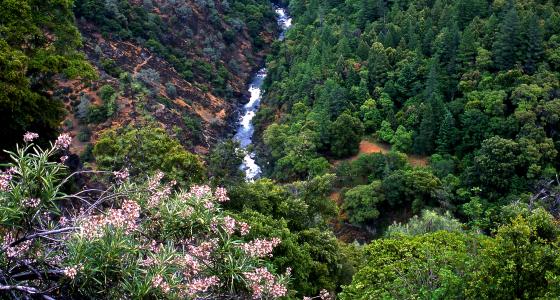Trinity River
Trinity River
California
This major tributary of California's Klamath River begins in the rugged Trinity Alps and makes its way through wilderness before meeting up with the mighty Klamath at Weitchpec. The Trinity is noted for its salmon and steelhead fishery resources, as well as its attraction to rafters, kayakers, and canoeists. The North and South Forks of the Trinity and the New River are included in the designation. The Trinity River offers a wide variety of opportunities for fun, family, and fishing.
Designated Reach
January 19, 1981. From the confluence with the Klamath River to 100 yards below Lewiston Dam. The North Fork from the Trinity River confluence to the southern boundary of the Salmon-Trinity Primitive Area. The South Fork from the Trinity River confluence to the California State Highway 36 Bridge crossing. The New River from the Trinity River confluence to the Salmon-Trinity Primitive Area.
Outstandingly Remarkable Values
Culture
The Trinity River area contains numerous prehistoric, ethnographic, and historic sites, including high concentration of prehistoric archeological sites in Hoopa Valley, an army post, and religious and ceremonial sites of major significance for the Hoopa Indians.
Fish
The Trinity is legendary for its salmon and steelhead fishing by drift boat or walk-in riverside spots, as well as for trophy brown trout. Chinook salmon are the most sought-after gamefish in the Trinity River system. Spring-run salmon begin to enter the river in May and provide trophy fishing through November. Although brown trout are not native, they were heavily stocked until the late 1970s, and a self-sustaining population remains in the upper river, providing fly and bait fishing.
Recreation
Roughly 80% of the Trinity River Basin is public land generally open for recreation use. The natural resources of the Trinity River Basin provide for a variety of recreation activities, including fishing, boating, swimming, camping, backpacking, and hunting. The river provides a major source of long, uninterrupted travel for river touring activities, such as canoeing, kayaking, and rafting. There are over 100 river miles available for touring with a range of difficulty from Class I to Class III+.
Scenery
The river basin is heavily forested and dominated by steep, rugged mountains and narrow valleys, which provides very impressive and attractive scenery. The natural beauty has been one of the most popular sights for visitors to the north coast. Scenic Highway 299 makes easy access to many points of interest.




